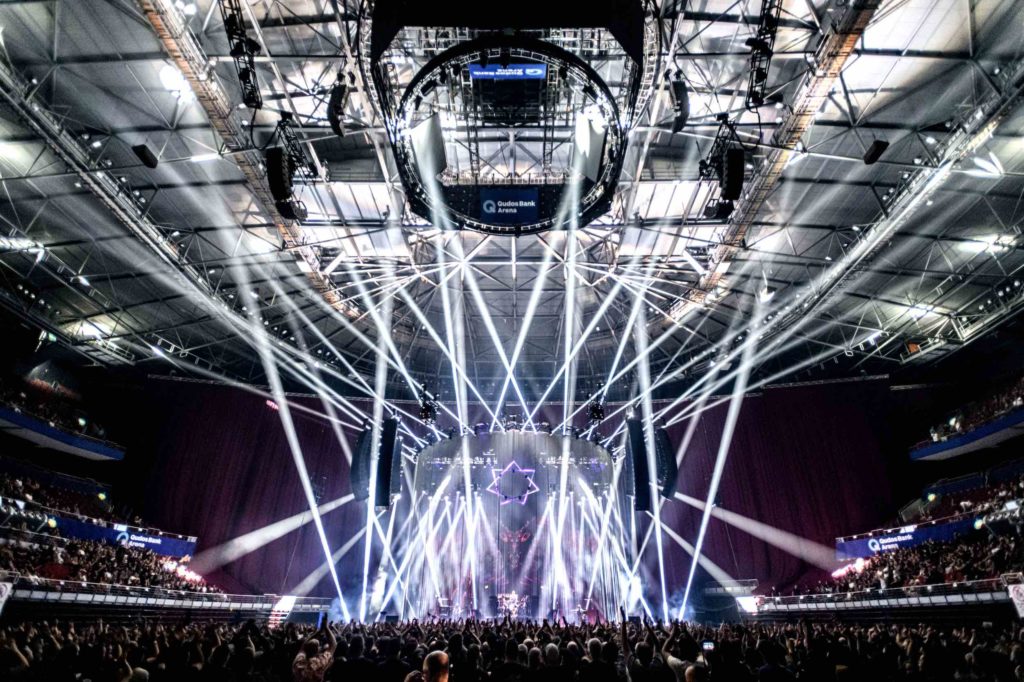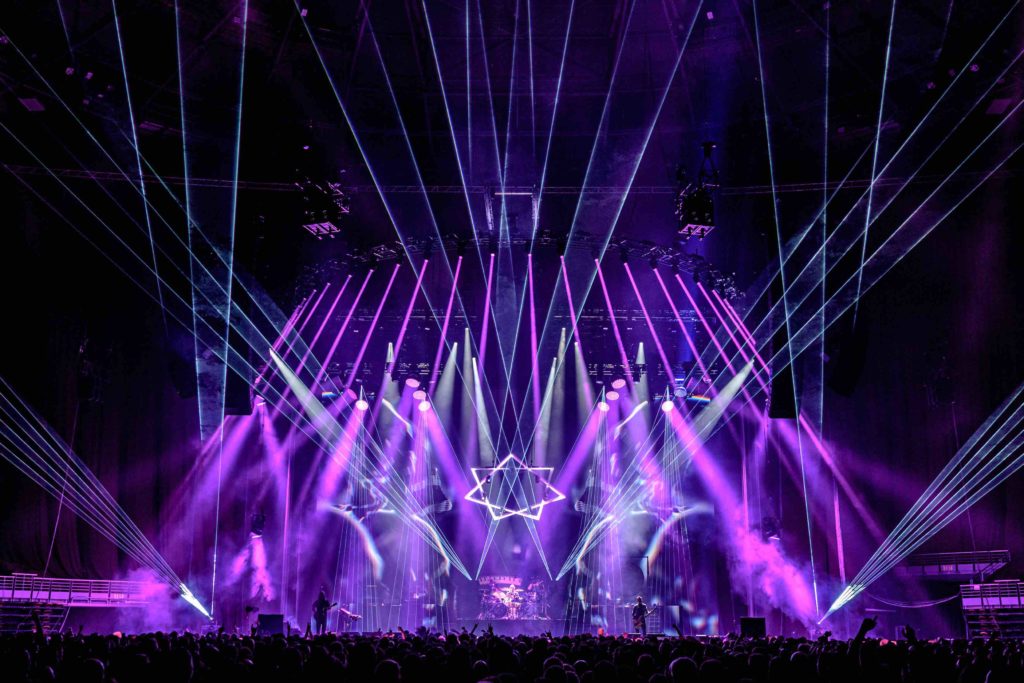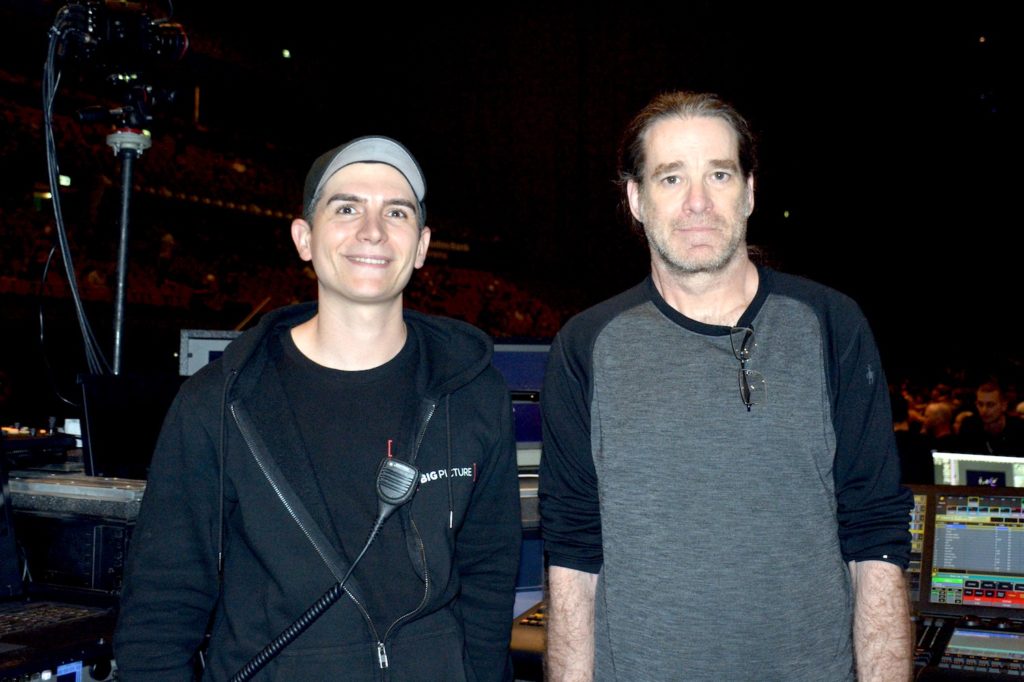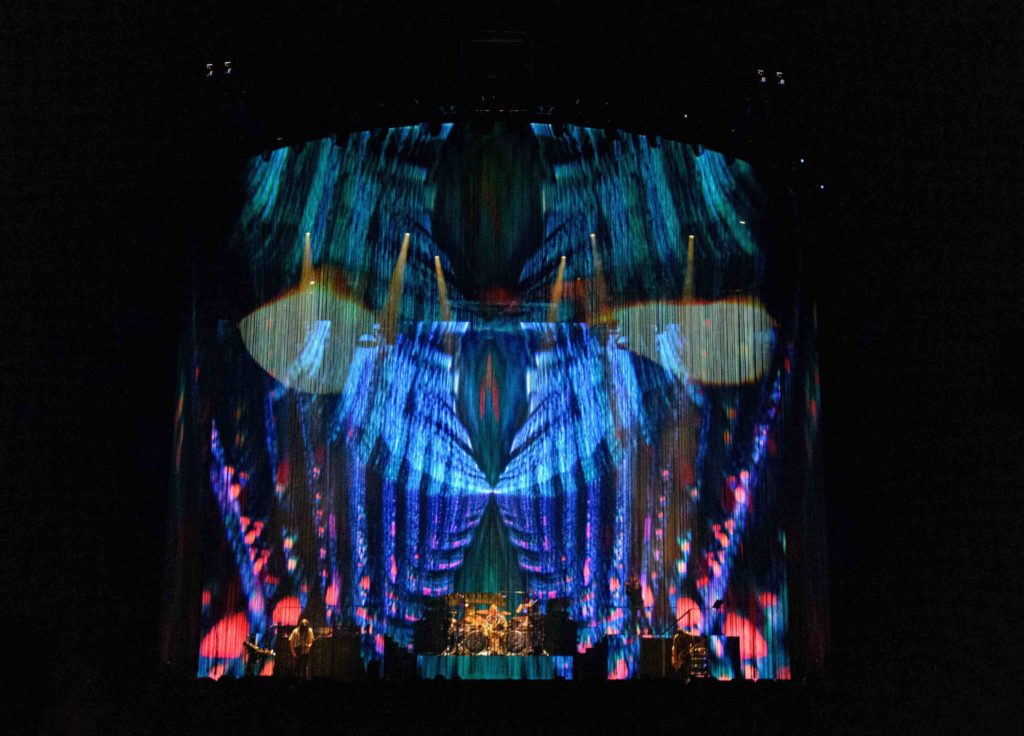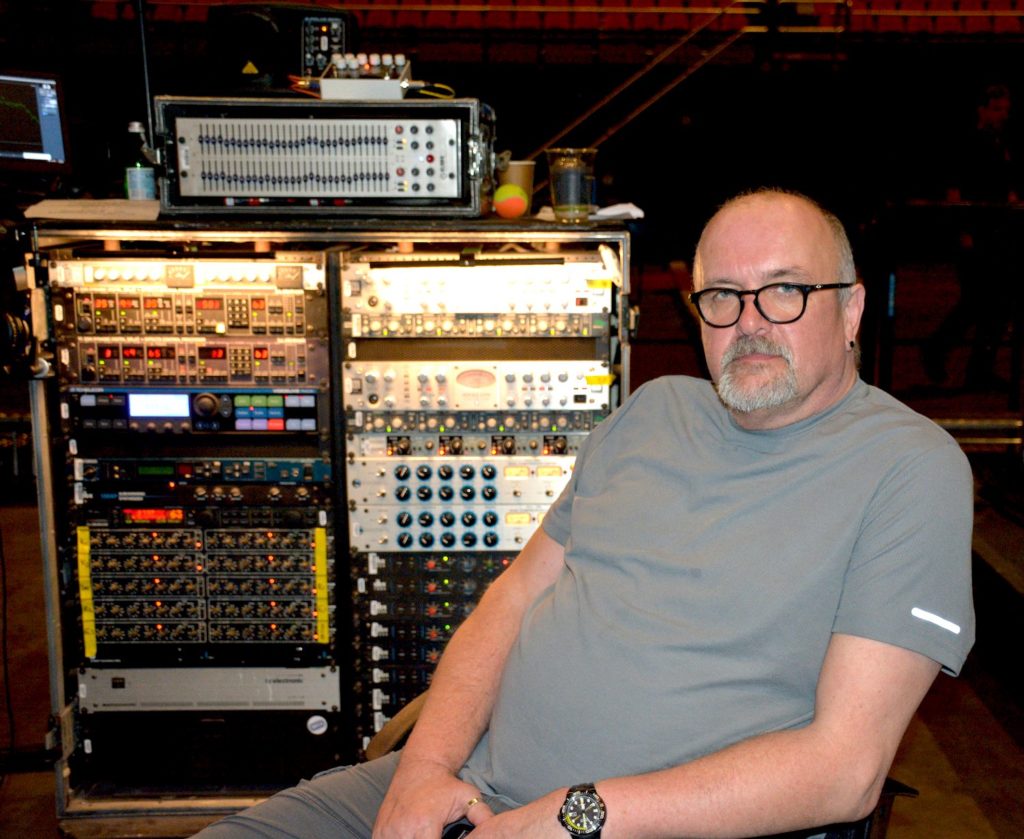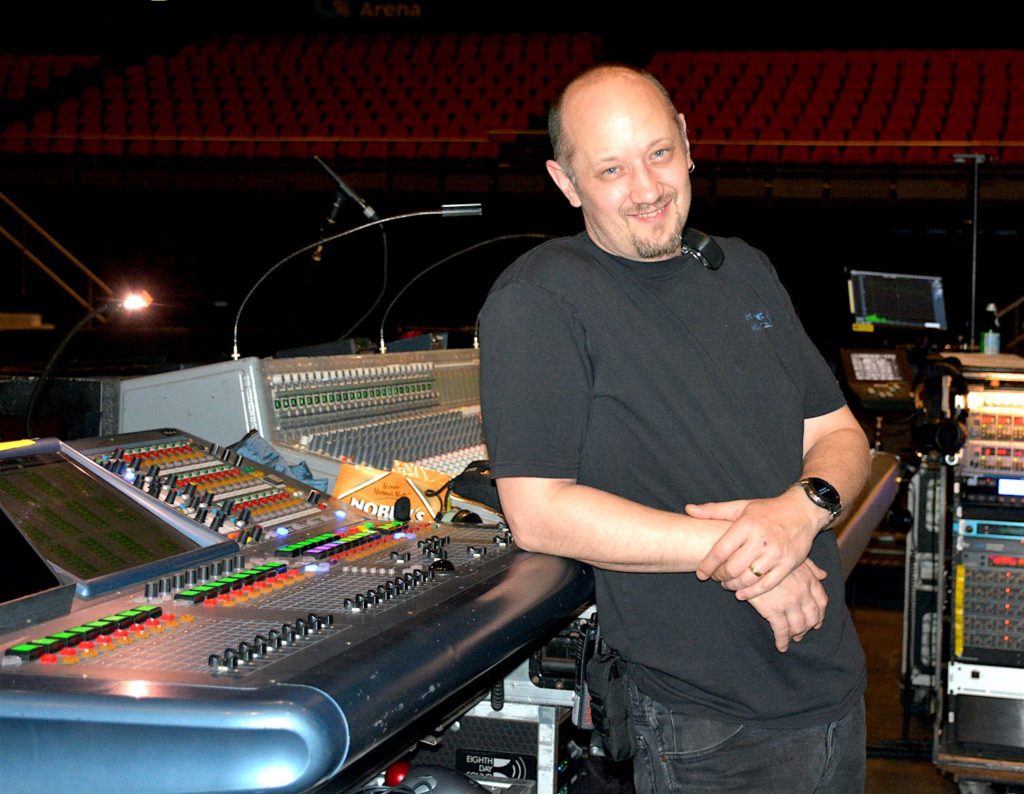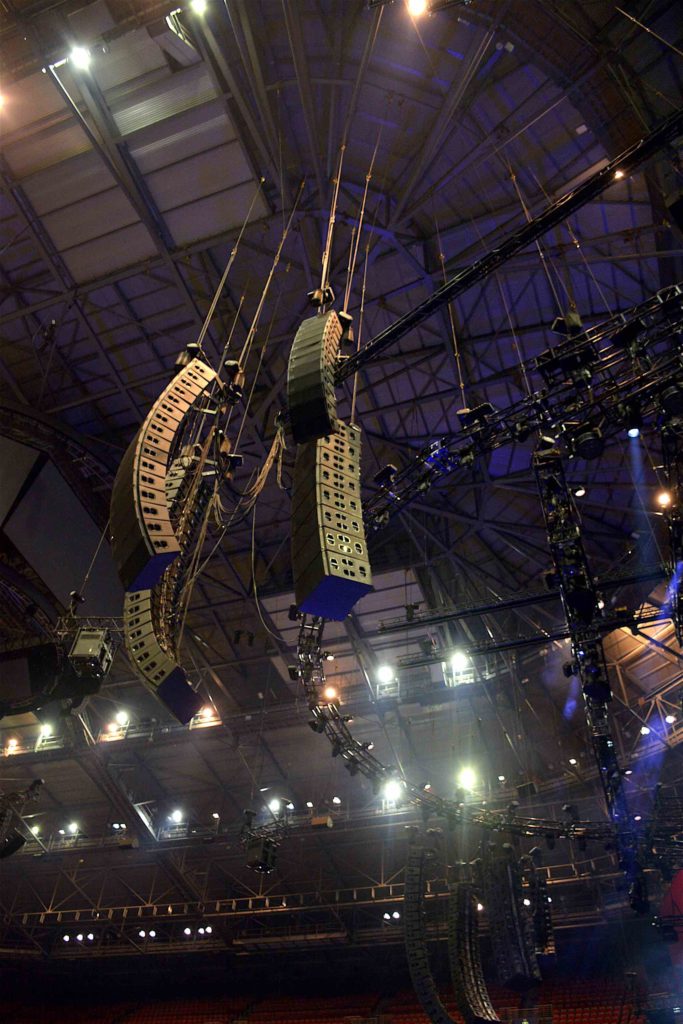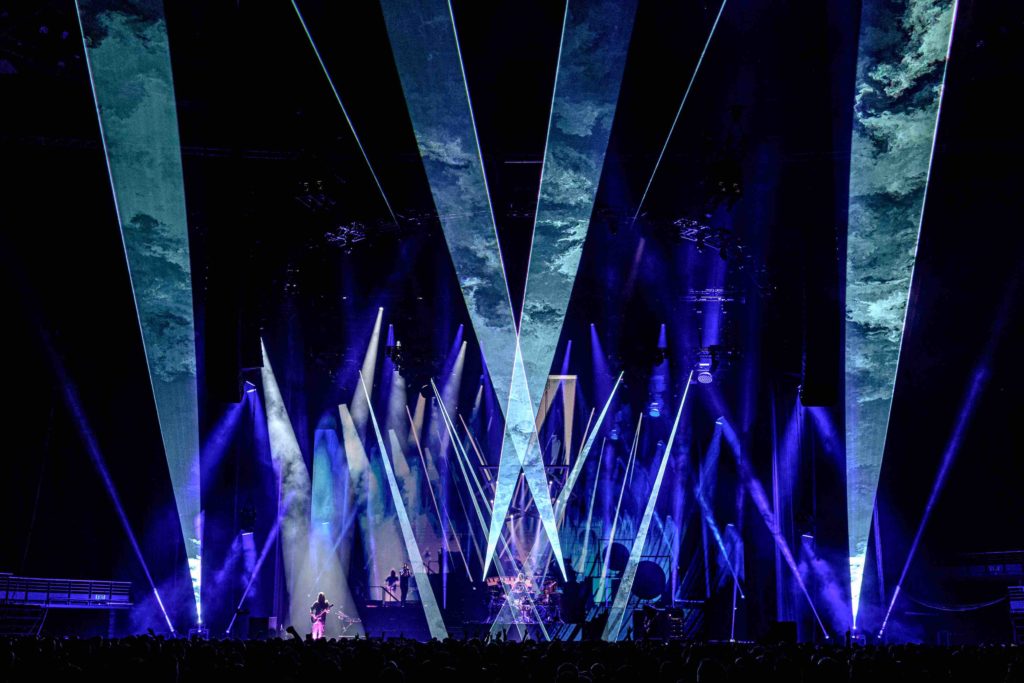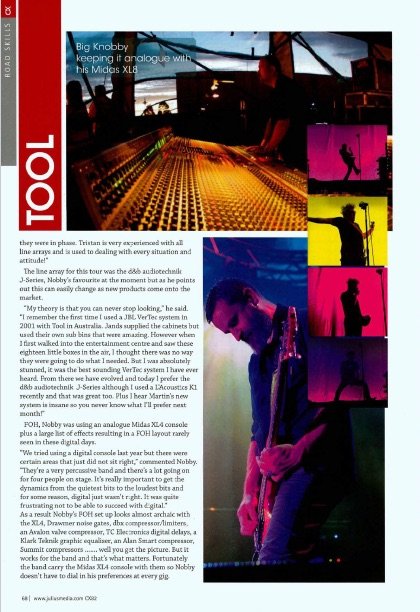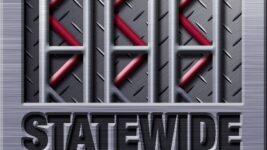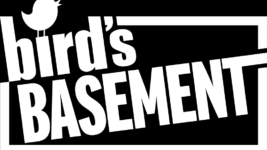News
20 Apr 2020
Tool: Inside the Fear Inoculum Juggernaut
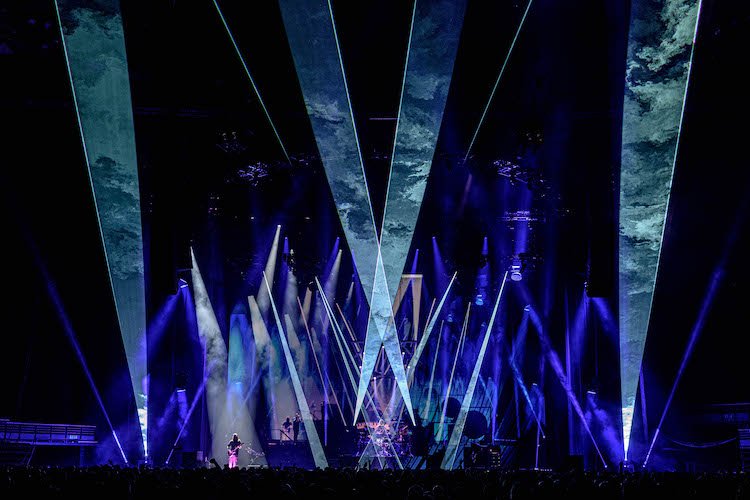
Subscribe to CX E-News
Tool is a band that doesn’t do anything by half measures. It had been 13 years since their last album before they released Fear Inoculum in 2019, because it had to be just right. This perfection carries through to their shows where a top-class team of personnel has been with the band for many years.
I turned up at the second Sydney show where the band had decided that day to add a song that they have never performed before, a song that lasts 16 minutes.
Consequently, the FOH design team of lighting designer Mark Jacobson, video director Breckinridge Haggerty and laser operator Scott Wilson were busy chasing that famous perfection.
Mark “Junior” Jacobson has been with Tool for 23 years since he became their LD at the start of the Ænima tour in 1996.
The Fear Inoculum Tour came with a big surprise for him as suddenly, after all these years, lead singer Maynard James Keenan decided he did want to be lit after all.
He’d spent the previous decades hiding in shadows, shunning the light.
Mark describes the lighting for Tool as traditionally murky with big moments. The show is a complicated merging of light, video, and lasers, like no other show I have seen.
In Australia, the majority of the lighting rig was from Chameleon including 24 Ayrton Perseo-S, 24 GLP JDC-1, 20 GLP X4 Bar20, 57 Ayrton MagicBlade FX, 13 Martin MAC Aura, 24 Robe Pointe and 36 MegaPointe.
From Delicate in LA, the band toured 12 Ayrton MagicRing, 24 High End TurboRay, eight Ayrton Wildsun, and seven Ayrton MagicDot.
The Ayrton Perseo-S were substituted for the Khamsin fixtures Mark usually uses but are not yet available in Australia.
“They are very similar in feature sets, so it was an easy swap-out,” he commented.
“They are mostly used as back keys for the band members. I’ve used MagicBlades before as they create a great shaft of light that can be similar to a beam sneaking through window blinds, I suppose.
“They are also changeable in shape by using selective elements. The fact that there are seven elements is no coincidence as the band has used “7” as a recurring theme over the years.”
Mark has been a fan of Ayrton products for several years but this tour is the first time he has incorporated Robe fixtures into his design.
He has Pointes lining the downstage curtain track saying that there are other compact beam futures on the market, but the Pointes added features that others didn’t have.
“I’d seen the MegaPointe at LDI a few years ago and felt they could add the punch and dominant beam needed in their roles,” added Mark.
“To be able to cut through everything else that is going on, we cue them in white light, often going over the band’s heads.”
For the front light, Mark used the good old Martin MAC Aura also using the ‘Aura’ feature in blue as a between-song work light.
“It creates a nice moonlight glow on stage even from nearly 14 metres in the air – and isn’t reliant on focus position or the setup cue to still do that job,” he said.
“The GLP JDC-1s have been on my (and most peoples) radar for a few years now. It’s quirky but quite impressive. I like that you can use it in a traditional strobe role and also as a big wash.
“Adding tilt to the picture just takes it over the top. We have some on the moving pods and also a row across the DS edge of the stage. They can be blinders and also serve as a solo uplight for special moments.
“The X4 Bars replaced some of the Blades in places where they didn’t need to pan and took up less of a footprint because of that.”
The 12 aforementioned pods are automated to create a variety of lighting looks above the stage. Each has an Ayrton MagicRing R9, two TurboRays, and a JDC-1 strobe.
They are all addressed identically and each occupies a DMX universe. The MagicRings take 256 channels, so each pod is approximately in the 400 channel range.
The crew hangs them the same every day, but the pods are all interchangeable as long as they get plugged into the correct cable.
“I’ve always liked having a large format light that messes with your scale perception,” explained Mark on his choice of the AyrtonRing R9 fixtures.
“I think I first saw that with one of Steve Cohen’s designs for Don Henley in the late ’80s and further down the road with Syncrolite and such.
“It’s a modern take on that format and having individual control of the 61 elements gives you so many beam shapes. It’s a goofy light, but so cool at the same time.”
The Fear Inoculum Tour is the first arena tour to use the High End TurboRay, a fixture Mark had had his eye on since early 2019 when he first saw a demo of it.
“I’d not had any High End fixtures in a Tool rig for several years and had recently rekindled my relationship with them,” he remarked.
“The first automated lights Tool ever had in 1996 were CyberLights (and Vari*Lite VL5s), and we’d used a number of their fixtures over the years from StudioColors and StudioBeams to x.Spots, StudioCommands, ShowGuns, and ShowBeams.”
This is the first tour that Mark used MDG hazers. Originally he had seen the purple Atmosphere range at some festivals and wanted to get those.
Delicate Productions, their US vendor, suggested The One and he wasn’t about to argue! Describing them as very versatile, Mark was delighted
that Chameleon purchased a couple in preparation for the Australian tour.
Mark used his own MA Lighting MA3 at FOH although still running in MA2 mode.
“I was going to make a purchase and couldn’t see any reason to buy an MA2,” he said.
“The MA3 platform is going to add a lot to the game once it’s ready. I’m looking forward to what it will become.
“We are running on 37 universes (about 18,000 MA parameters) over MA Net to the stage where NPUs and Nodes are distributing the signal.
“We carry a grandMA2 as a spare (and as a test console for the mornings before FOH is set up), and I have a rack-mounted PC at FOH running MA2 OnPC that serves as my immediate backup during the show.”
Like his video and laser compatriots, Mark uses no timecode at all, as the band doesn’t play to a click.
As he doesn’t have a bitstream to latch onto, he’s responsible for making everything happen on time the old fashioned way. However having worked as part of the same team for many years, Mark says they can now anticipate each other and much of the show control between the three of them comes naturally.
Chameleon also supplied an Intercom Master, four Intercom Substation, 24 PDS 12 GPO Distribution, four Stagesmart Mains Distribution and eight DD8 Data Distribution, as well as truss, cables, and motors. Montreal’s Show Distribution supplied 32 automation controls and motors.
“The Chameleon crew were great,” Mark commented.
“Great work ethic, as always. Our universal crew chief, Graham “Db” Jelly, is Australian and has done a lot of work with Chameleon, so he already knew all of them.
“Over the years he had been the crew chief on nearly every Australian tour I’d done with Tool and several other bands (dating back to Jands and Bytecraft) and we made him our worldwide crew chief in the summer of 2019.”
Video
Projection surfaces are a must for the design team and this tour, they came up with the idea of string curtain to envelop the band for the first few songs.
A traveller track system provided by All Access wraps the stage in 270° of Rose Brand custom string curtain.
With the curtain closed, but with the band illuminated, you can still see them playing behind what is projected on the string making for a unique effect.
Video Director Breckinridge Haggerty joined towards the middle of the Ænima tour in 1998. He describes the video concept as “a living backdrop and sometimes cocoon for the band”.
The video content has been created over the last 25 years mostly by friends of the band. The music videos that Breck remixes live were all directed and produced by Adam Jones and friends.
Adam was in the monster makeup business before Tool became successful, so the music videos were created by his friends from that world. The rest of the content comes from a few extremely talented artists such as Dominic Hailstone, Matthew Santoro, Meats Meier, and Camella Grace.
As well as the creative elements, Breck has developed new video technologies for Tool over the years.
He is the owner/operator of all the video equipment at FOH at this point, developing various parts himself. This includes the new NEV9 Universal Controller that he’s built with Bill Hewlett.
“I started working on ways to control video with a lighting desk in ’99 which resulted in a serial control system called the NEV,” he explained.
“It made it possible to control existing broadcast-quality video equipment with DMX and a fixture profile – the same methods as automated lighting.
“Nothing of the sort existed at the time. I knew what I wanted to do, and using real video equipment was the only way to see quality results. PCs and Macs weren’t up to the task yet. The predecessors of the media server were strained to blend two 320×240 videos.”
Last year, Breck needed to find a new media server platform and after researching his options, he decided to embark on a journey to build his own with the Derivative TouchDesigner toolset.
The results are a platform called LUPO.
“To me, it’s the greatest media server ever created,” he said. “I didn’t have to conform my way of working into someone else’s idea of a media server. Its tailor-built for me and the show.
“My experience with Touchdesigner and the Derivative team has been very positive.”
All of the video work is controlled with an MA2 lighting console that allows Breck to control the video in different styles depending on the song.
Songs like Fear and Pneuma are cued out, meaning Breck runs through a sequential list of cues, so each moment of the song can be edited, stored, and then easily repeated each night.
Other songs like Descending are more free-form across multiple handles where things might go different ways each time.
Breck remarked that the MA2 console is a great video sequencer, allowing a blend of sequential and parallel operating styles.
For several years now, Australia’s Big Picture has looked after the band’s video needs including the rear LED wall of 750 x ROE MC7 panels in ACASS touring frames, eight Barco UDX 4k32 projectors with .4 lenses and two Panasonic AW-HE130 PTZ Camera with AW-RP50 remote.
The Brompton LED processing feature ‘Dark Magic’ enables Breck to maintain a balance in brightness on the LED wall between the lighting and curtain projection levels without getting banding and noticeable quality loss.
“There is a feature on the Brompton LED processor called ‘Dark Magic’ which helps reduce the quality loss on the really low level and dark video content – which is most of the show,” explained Nathan Barnier, Video Crew Chief and another Aussie on tour with the band.
“In the past, you would have to run the LED wall at higher levels which would impact the lighting and our curtain projection, but with the feature turned on Breck can run the video at extremely low levels while maintaining a nice quality, smooth gradients and no noticeable video banding that would occur with other processors at low levels.”
Audio
Sound engineer Alan “Nobby” Hopkinson, who has been with the band for 20 years, was using an audio system from Eighth Day Sound. In Australia, he had a d&b audiotechnik J-Series PA although elsewhere he has been using the newer GSL system.
“I’m loving using the J Series again,” commented Nobby. “It has some nice characteristics that suit this band.
“It’s a very loud rig, the new system is all about cancellation behind the rig so there’s not so much noise pollution but this is plain loud, everywhere!”
It’s a fairly standard arena rig with the main hangs 20 deep, 16 J8 and four J12, with the side hangs all made up of J8s, 16 boxes per side. A third hang of 12 V8s was used on each side even though they were not doing the full 270° wrap.
“Although we don’t require the width of three hangs I decided the coverage would be improved by having a third hang to take a bit of the pressure off the side hangs,” explained Liam Halpin, the band’s system tech.
There were eight J-SUBs up in the air each side as well as 18 B22-SUBs on the floor in a distributed cardioid sub-array to give control with the low end.
A pair of Y10Ps in the centre kept the most intense fans happy. Finally for fill, there were V10P and V7P point source cabinets.
“A lot of people tend to use line array and lip fills where you try to cover almost to the barrier with the actual hangs and then just pick up spot fills right across the front but I’ve never really liked it because from an imaging point of view it’s quite distracting if you’re stood four or five metres away from the barrier,” added Liam.
“If you’re watching the band in front of you on stage but you’re hearing it from above you, it feels unnatural. By using the V10Ps and V7Ps on the corners of the stage, I’ve gone back to when we used to use point source clusters; you’d have a flown PA and a ground-stacked PA.
“Even with a standing show, they still manage to drag the image down so you feel like you’re listening to a band rather than a PA.”
The PA was driven by d&b D80s with the entire system Dante over a network that Liam designed. DS10 Audio network bridges were used to feed the AES signals into the amplifiers and the entire system was set up so that there was a main and a redundant drive system.
For this tour, Liam and Nobby introduced an overhead speaker system to add an extra dimension to the band’s soundscapes.
“The problem I have with a more traditional surround sound system is how to deliver that experience to the people in the upper levels, bearing in mind we’re running on a single day load-in schedule,” commented Liam.
“To try install surround speakers in those upper levels would just be completely impractical plus they would obstruct sightlines.
“The concept I came up with was to do surround sound for the lower bowl with two hangs of d&b V-Series back-to-back almost in a U shape. These hang in traditional left-right surround hangs that fly in the lower bowl, toward the rear of the arena, and fire back toward the stage.
“To add the height dimension, we’ve got seven cabinets of d&b V-Series firing from the middle of the arena to cover the back half of the lower bowl to about where front-of-house is.
“Directly behind those, closer to the stage, is another hang, flown off two frames so that I can get a lot of down-tilt. That covers from the front edge of the stage to the middle of the arena.”
Liam further explained that he then uses four d&b Y-Series (V-Series in Australia) to do an upper level fill. The two ceiling hangs are each flown off a single piece of truss, on the centre line, so he came up with the idea of having a side-firing hang flown from the same truss.
Two more hangs on the back corners of the arena cover the rear section of the upper bowl and the section behind the surround hang.
This “effects PA” is loosely based on the concept of Dolby Atmos which is a lot more prevalent in home theatre and cinema sound. Liam uses a TiMax SoundHub to do the processing and the surround system is driven off a Midas Pro2.
Nobby was mixing on a Midas XL4 saying he is lucky the band allows him to keep using one, happily shipping its heftiness all over the world.
“In fact, we have two of them so they can be shipped around the world and take a while to arrive whilst the racks are air freighted,” he clarified.
“Tool is one of the last bands I do on an analogue console, we did try digital but it didn’t suit them. So we stay with the 400 kilo lump of metal because, at the end of the day, it sounds good and is right for the band!”
Effects wise, Nobby had a TC Electronics 2290 as the main vocal delay with another for vocal modulation. A TC Helicon VoiceLive Rack does all the harmonising for Manyard’s main vocals, a TC Electronic D-TWO delay was used primarily for slapback delay, a dbx Subharmonic Synthesizer adds that extra depth to the kick drum, a Leslie Effect Simulator is used as an effect on vocals for one of the songs, and a Klark Teknik Graphic Equaliser is across the left and right.
CX Magazine – April 2020
LIGHTING | AUDIO | VIDEO | STAGING | INTEGRATION
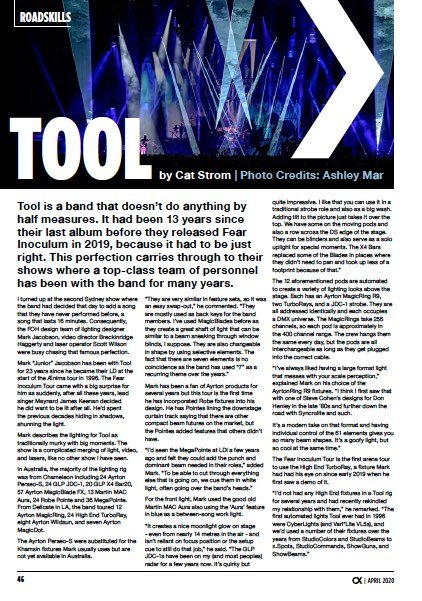
Entertainment technology news and issues for Australia and New Zealand
– in print and free online www.cxnetwork.com.au
See also: Timax 3D Immersive Audio for Tool Arena Tour
https://www.cxnetwork.com.au/timax-3d-immersive-audio-for-tool-arena-tour, News – CX Network 1 April 2020.
Tool – CX Magazine ‘Roadskills’ June 2013, pp.67-69.
https://www.cxnetwork.com.au/cx-magazine/cx82-jun-2013
© VCS Creative Publishing
Subscribe
Published monthly since 1991, our famous AV industry magazine is free for download or pay for print. Subscribers also receive CX News, our free weekly email with the latest industry news and jobs.

